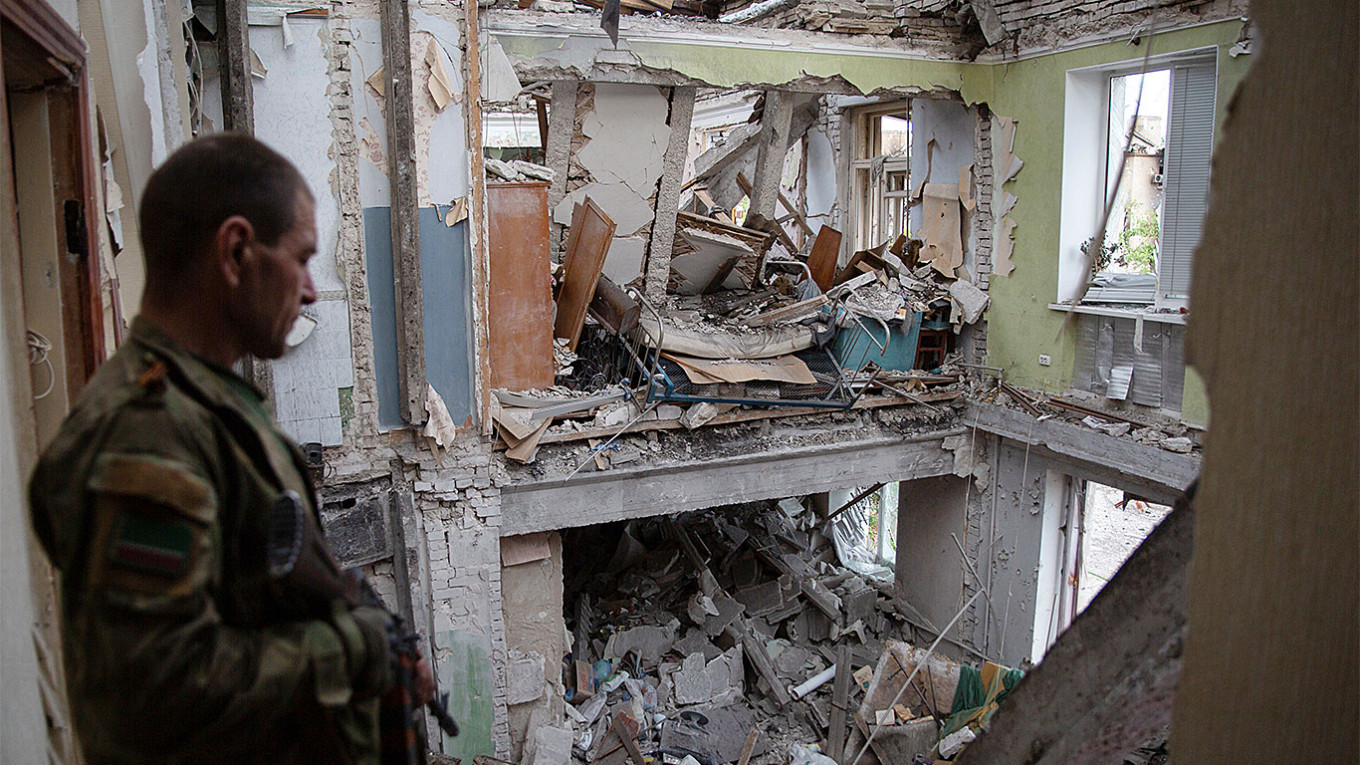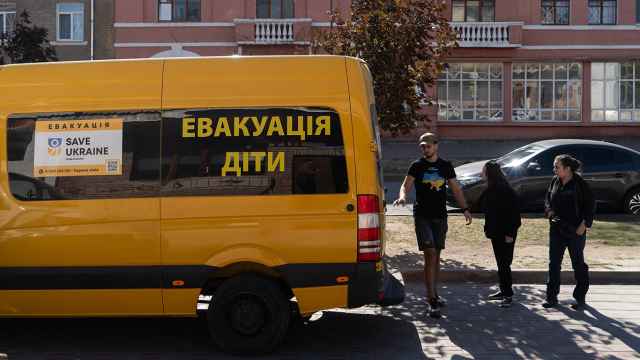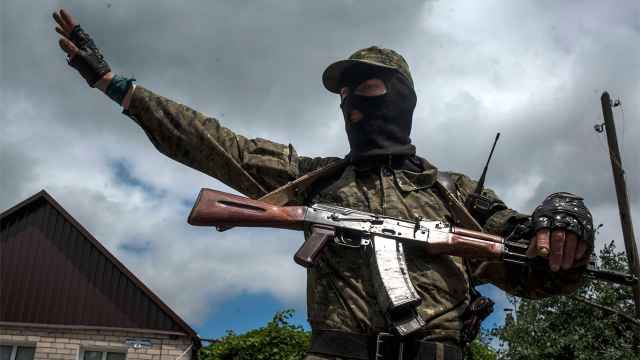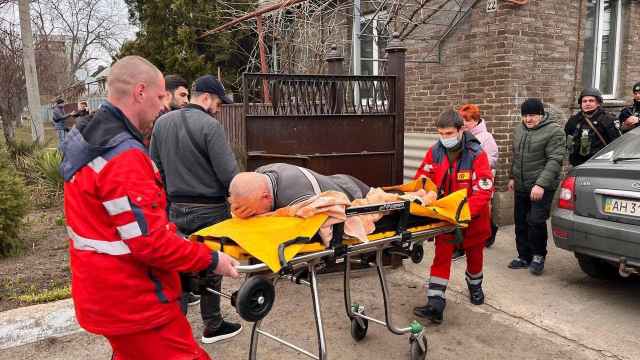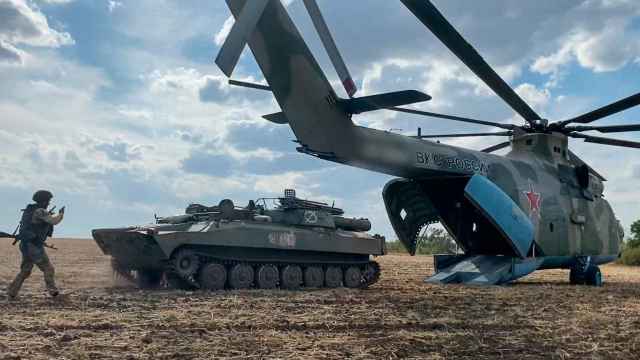A two-month Russian assault on the Ukrainian city of Sievierodonetsk entered its final phase Friday after Ukrainian forces were ordered to retreat.
The capture of the city, where 100,000 people lived prior to Russia’s invasion, represents a small but significant victory for Russian forces that are poised to take control of eastern Ukraine’s entire Luhansk region – widely believed to be a key Kremlin war aim.
The Ukrainian retreat is “perhaps more significant than it’s being made out,” said Sam Cranny Evans, a military analyst at the London-based Royal United Services Institute. “They [the Russian Armed Forces] probably still have the ability to continue this kind of advance and perhaps in the Kremlin they now think they can grind the Ukrainians down.”
After regrouping troops in eastern Ukraine in April after a failed attempt to seize the Ukrainian capital, Russia has used its numerical superiority in soldiers and equipment to make slow, incremental gains.
The bloody battle for the city, which began at the beginning of May, has seen Russia pound Sievierodonetsk with artillery, rockets and air strikes, irretrievably damaging 80% of residential buildings in the city and inflicting heavy losses on the Ukrainian army.
Little by little, Ukrainian forces were pushed back into a small area around the Azot chemical plant, where hundreds of civilians were taking shelter – a scenario reminiscent of Russia’s bloody siege of the Azovstal steel plant in the Ukrainian port city of Mariupol.
Ukrainian officials said Friday that troops had finally been ordered to pull out of Sievierodonetsk entirely and cross the Siverskyi Donets river to the west.
“Unfortunately, we will have to withdraw our troops from Sievierodonetsk, because it makes no sense to be in broken positions — the number of dead is growing,” Sievierodonetsk Mayor Oleksandr Stryuk wrote on Telegram on Friday.
But it was not immediately clear whether Ukrainian forces had already evacuated, or were just beginning to do so.
The news prompted some jubilation from pro-war Russians.
“Sievierodonetsk is ours!” pro-Kremlin war reporter Alexander Kotz wrote on his Telegram channel Friday.
There are no precise figures for casualties on either side during the fighting for Sievierodonetsk, but both Russia and Ukraine have likely suffered thousands of deaths. Ukrainian President Volodymyr Zelensky said last month that Ukraine was losing up to a 100 soldiers killed every day.
“The battle has been defined by Russians prioritizing it,” said Cranny Evans. “They seem to have taken artillery and troops from other sections of the front and focused on Sievierodonetsk.”
The Ukrainian army’s shrinking foothold in the city had become increasingly perilous in recent days as supply lines were cut.
All three bridges that crossed the Siverskyi Donets river to the city’s west were destroyed by Russian forces and Reuters image published Thursday showed Ukrainian forces transporting supplies over the river, which divides Sievierodonetsk from nearby Lysychansk, using an inflatable boat.
“The fate of Sievierodonetsk has probably been sealed for a few months already,” said defense analyst Konrad Muzyka, head of the Poland-based Rochan consultancy.
The capture of Sievierodonetsk means Lysychansk is the only remaining city in the Luhansk region still under the control of Ukrainian forces.
Russia is currently engaged in a number of battles to the south of Lysychansk, according to media reports, and Russia’s Defense Ministry claimed Friday that its troops had captured 10 Ukrainian villages in the Luhansk region over the past five days.
Battlefield reports also suggest that Russian forces have already managed to cross the Siverskyi Donets river to the south of Lysychansk.
Despite the Russian gains, Luhansk regional governor Serhei Haidai framed Ukraine’s retreat as a strategic decision in a televised address Friday, claiming “it makes no sense to remain in positions that have been demolished.”
But the Ukrainian withdrawal means Russia can now refocus its efforts on other parts of the front, including the Donetsk region west of Luhansk.
Despite speculation that Russia might use the seizure of Sievierodonetsk to regroup, continued heavy fighting in the area suggests that they will push on.
Ukrainian officials and soldiers on the ground have said that Ukrainian forces could be ordered to pull back from Lysychansk at any moment if there is a risk of encirclement.
“There were talks of Russia taking a break after the fall of Sievierodonetsk, I'm not so sure that will happen,” said Muzyka.
“The Russians are on a roll, and there's no reason for them to stop.”
A Message from The Moscow Times:
Dear readers,
We are facing unprecedented challenges. Russia's Prosecutor General's Office has designated The Moscow Times as an "undesirable" organization, criminalizing our work and putting our staff at risk of prosecution. This follows our earlier unjust labeling as a "foreign agent."
These actions are direct attempts to silence independent journalism in Russia. The authorities claim our work "discredits the decisions of the Russian leadership." We see things differently: we strive to provide accurate, unbiased reporting on Russia.
We, the journalists of The Moscow Times, refuse to be silenced. But to continue our work, we need your help.
Your support, no matter how small, makes a world of difference. If you can, please support us monthly starting from just $2. It's quick to set up, and every contribution makes a significant impact.
By supporting The Moscow Times, you're defending open, independent journalism in the face of repression. Thank you for standing with us.
Remind me later.



